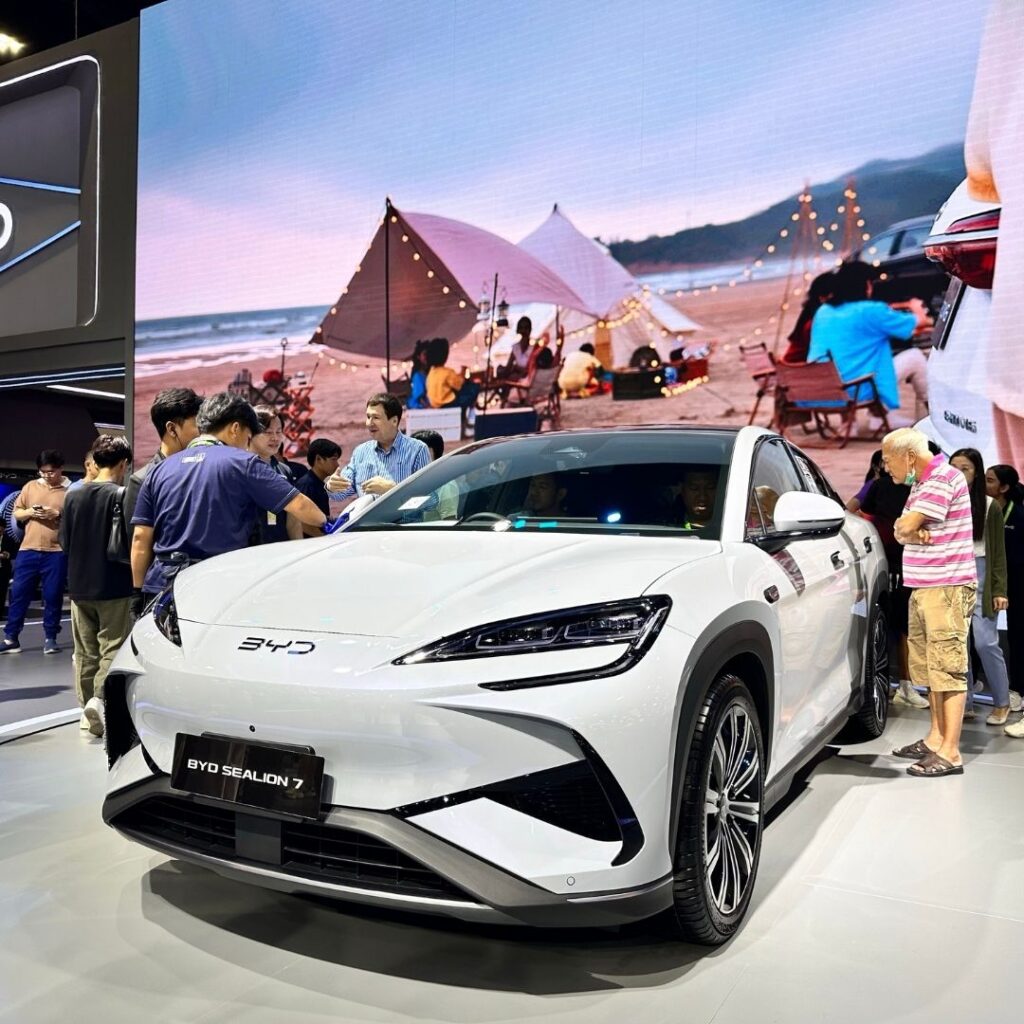BYD Company Limited, originating as a battery manufacturer in 1995, has strategically transitioned into a dominant force in the electric vehicle (EV) market since 2003. Founded by Wang Chuanfu, BYD’s expertise in battery technology has provided a crucial competitive edge, allowing it to surpass industry giants like Tesla in certain quarters. For instance, in Q4 2023, BYD delivered 526,409 battery electric vehicles, demonstrating its rapid growth and effective market entry strategies. This article will analyze BYD’s marketing strategy, examining its target audience, brand positioning, marketing channels, and pricing strategies.
Identifying BYD’s Primary Target Customer Segments
BYD employs a broad targeting strategy, focusing on several key segments:
- Environmentally Conscious Consumers: Individuals who prioritize sustainability and seek eco-friendly transportation solutions.
- Tech-Savvy Individuals: Consumers interested in advanced technologies and smart features in EVs.
- Businesses and Government Organizations: Entities seeking to reduce their carbon footprint through fleet electrification.
- Early Adopters: Individuals eager to embrace new technologies and trends in the automotive sector.
BYD’s customer demographics typically include young adults to middle-aged, middle to high-income earners with higher education levels, residing in urban areas. The company utilizes a multi-faceted approach to market segmentation, considering geographic, demographic, psychographic, and behavioral factors. For example, BYD offers affordable EVs for urban commutes in developing markets and premium models with advanced features in developed countries.
Analysis of BYD’s Brand Positioning and Key Differentiators in the EV Sector
BYD positions itself as an innovative and sustainable player in the EV industry. Key differentiators include:
- Advanced Battery Technology: The proprietary Blade Battery, known for its safety and durability, provides a significant advantage.
- Diverse Product Portfolio: Offering battery electric vehicles (BEVs), plug-in hybrid electric vehicles (PHEVs), and commercial vehicles.
- Vertical Integration: Controlling most aspects of production, from raw materials to final assembly, resulting in cost efficiency and quality control.
- Technological Innovation: Investing heavily in R&D, evident in technologies like the e-Platform 3.0 and its “Intelligent Driving for All” initiative.
- Focus on Pure-Electric Vehicles: In European markets, BYD differentiates itself by only providing pure electric vehicles.
BYD’s “Build Your Dreams” slogan encapsulates its mission to improve lives through technological innovation, reinforcing its commitment to a sustainable future.
Investigation of the Various Marketing Channels BYD Utilizes
BYD employs a comprehensive marketing strategy, integrating online and offline channels:
- Digital Marketing: Utilizing social media platforms, SEO, content marketing, email campaigns, and influencer collaborations.
- Offline Marketing: Establishing dealerships and showrooms, participating in auto shows, and utilizing traditional print and media advertising.
- Strategic Partnerships: Collaborating with ride-hailing platforms and other organizations to expand market reach.
- Integrated Online and Offline Strategies: Offering virtual showrooms and online test drive bookings to enhance customer experience.
BYD adapts its channel strategy based on specific market characteristics, utilizing direct sales or partnerships with local dealers as needed.
Examination of BYD’s Advertising and Promotional Activities
BYD’s advertising and promotional activities focus on sustainability, innovation, affordability, and safety. Key strategies include:
- Engaging Social Media Campaigns: Utilizing interactive content and hashtags to build community and brand awareness.
- Traditional Advertising: Employing television and print media to reach broader audiences.
- Auto Shows and Events: Showcasing new models and technologies.
- Promotional Offers and Incentives: Providing discounts, extended warranties, and tech upgrade bonuses.
- Direct Competitor Comparisons: Highlighting similar or superior features compared to rivals like Tesla at more affordable prices.
BYD also leverages real-world impact stories, such as public transit electrification, to enhance credibility.
Exploration of BYD’s Approach to Digital Marketing and Social Media Engagement
BYD utilizes digital marketing and social media to connect with a global audience. Strategies include:
- Active Social Media Presence: Engaging with customers on platforms like Facebook, Twitter, Instagram, Weibo, and WeChat.
- Interactive Campaigns: Creating engaging content, such as the “Dolphin on the Road” campaign, to build community.
- Influencer Marketing and Live Streaming: Partnering with influencers and live streaming launch events.
- Digital Tools: Offering virtual showrooms and a mobile app for remote vehicle control and information access.
- Performance-Driven Marketing: Utilizing personalized messaging and micro-segmentation tools for targeted advertising.
Investigation of BYD’s Pricing Strategy and Alignment with Marketing Objectives
BYD’s pricing strategy varies significantly across markets:
- Competitive Pricing in China: Employing price wars to gain market share, supported by vertical integration.
- Premium Pricing in Overseas Markets: Implementing significant markups to position BYD as a premium brand.
- Value Proposition: Offering competitive value by including features that other automakers charge extra for.
This dual approach reflects BYD’s understanding of different market dynamics and consumer perceptions.
Research on Variations in BYD’s Marketing Strategy Across Different Geographical Markets
BYD adapts its marketing strategy to reflect regional differences in consumer preferences, competition, and regulations.This includes varying product offerings, messaging, and distribution strategies.
Wrap up
BYD’s robust marketing strategy, combining a clear understanding of target segments, strong brand positioning, and strategic channel utilization, has driven its rapid growth in the EV market. The company’s adaptability, competitive pricing, and technological innovation position it for continued success in the global automotive industry.


